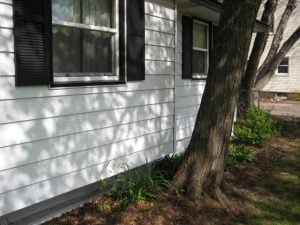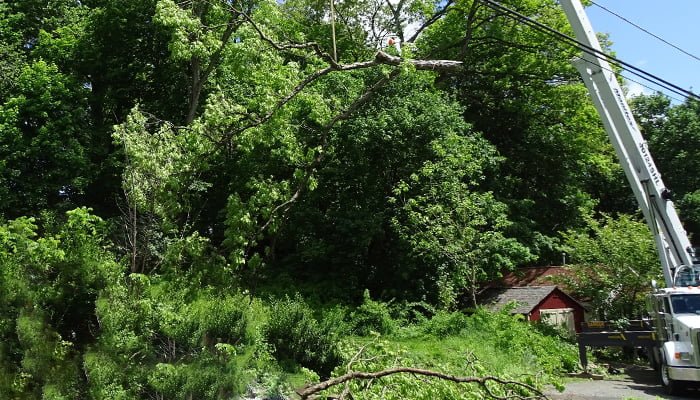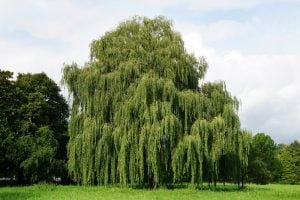Incorporating the correct tree space when planting in your yard is important for creating a visually appealing landscape. A landscape with plants spaced too far apart looks barren, and one with trees and shrubs too close together can result in an unmanageable jungle. However, planning for proper tree space is also important in determining the success of your trees, and the safety of your home and property.
It is important that the mature full growth potential be considered when planning what plants/trees will be planted in your yard, and where they’ll be planted. When considering full mature potential, evaluate height, crown spread, and necessary root space.
Some issues that you can encounter if proper tree space was not considered, and you are planting trees too close together are;
- A weak/struggling tree due to limited space for roots to grow and competition for nutrients with close by trees.
 Damage to your property (this can be in the form of root damage to your foundation or other structures due to planting trees too close to your home, or the result of heavy weakened limbs falling on your home).
Damage to your property (this can be in the form of root damage to your foundation or other structures due to planting trees too close to your home, or the result of heavy weakened limbs falling on your home).- Additionally, trees (especially large one) should not be planted over or close to a septic tank, important plumbing pipes, or field lines.
- In cases where there is damage to your property, you may need to deal with the hassle and costs of insurance claims + tree removal and cleanup costs.
How Far Do Tree Roots Extend?
- Tree roots typically extend 1.5 – 3 times the expected height of a tree. This means that you need to consider the expected mature height of your tree and multiple that by up to 3 times to get the accurate distance of root expansion to determine proper tree space when planting.
Trees Known To Be “Aggressive” (should be planted 100 feet from any building drain pipes, sewers, swimming pools, etc.)
So, you may be wondering, well how much space should I allow between trees? Here’s a basic guide to help determine proper tree space when planting based on size and type.
Small Trees (30’ or less) – Allow 6-15 feet
This would include trees like flowering dogwoods, magnolia, smaller conifers, etc.
Medium Trees (30’-70’) – Allow 30-40 feet
This would include fruit trees, birch, larger Japanese maple, etc.
Large Trees (70’ +) – Allow 30-50 feet
This would include sugar maples, oak ginkgo, flowering pear, etc.
Large Aggressive Trees – Allow 100 feet
Aggressive trees listed above.
Thoroughly considering proper tree space when planning your residential landscape is extremely important for several reasons. The most common mistake homeowners make when planting is not considering the tree’s full growth potential. What appears to be a tiny tree could grow into a tree 70 feet high with an even larger root spread. Proper planning will help to avoid costly damages, wasted money, and the need to do the project more than once.
When hiring a certified arborist, you can feel confident in their knowledge and training to properly determine an effective landscape that both incorporates the right plants and places them correctly! Contact Red Cedar today for your free tree consultation and let us help ensure that your trees are spaced properly.



